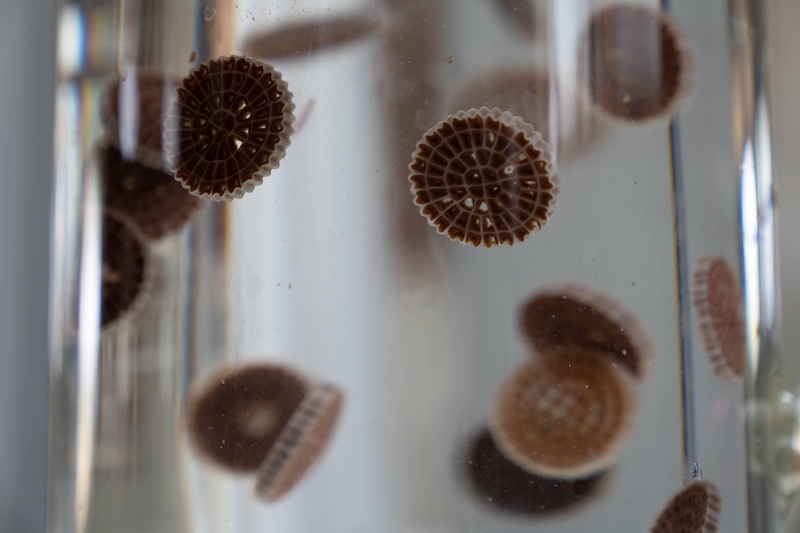Industry and research partnerships are crucial to bolstering innovation, and Urban Utilities and the University of Queensland are leading the way nationally after formalising their ongoing collaboration with a new five-year strategic alliance agreement.
Despite the organisations’ long research partnership, the new agreement is set to establish a sustainable industry research delivery platform, seeking to accelerate and realise world-class research and enable increased adoption of new technology.
Urban Utilities Research and Development Business Partner Dr Jason Dwyer said the new agreement aimed to accelerate research and increase the adoption of new technology in the water sector.
“We have a decades-long partnership with the University of Queensland and we’re excited to be strengthening that partnership,” he said.
"The agreement covers a range of activities including the use of the Urban Utilities Luggage Point Innovation Precinct, joint projects, student placements and knowledge sharing between Urban Utilities and the University of Queensland.”
Urban Utilities' dedicated innovation precinct at Luggage Point in Brisbane’s east is the first of its kind in Australia. It currently houses $20 million worth of research projects with 24 local, national and global organisations and universities.
“What makes our innovation precinct so unique is that it allows researchers to work alongside operators and test their research in real-world conditions at our Luggage Point Resource Recovery Centre,” Dwyer said.
University of Queensland Associate Professor Shihu Hu said the partnership had already brought groundbreaking research to life in the real world.
“Our collaborative projects have won the last five Australian Water Association Queensland Research Innovation Project Awards, and these projects have one thing in common: all of them did pilot-scale demonstration at Urban Utilities’ Luggage Point Innovation Precinct,” he said.
“The research projects conducted at Urban Utilities’ Luggage Point Innovation Precinct test and demonstrate novel water technologies in pilot scale in real-world conditions, which is a critical step before technology adoption and commercialisation.”
Ground-breaking anammox project
Dwyer said one of the most successful projects to come out of the partnership between Urban Utilities and the University of Queensland was its anammox project.
“After 10 years of research and development alongside our project partners, Veolia Water Technologies and the University of Queensland, we installed Australia’s first full-scale sidestream Anita Mox treatment at our Luggage Point Resource Recovery Centre,” he said.

“The process uses anammox bugs to feed on nutrients like ammonium and nitrogen, naturally removing them from wastewater, requiring less chemicals and energy than traditional treatment processes.
“The increased efficiency saves us around $500,000 each year and helps cater for future population growth.”
Hu said the anammox project was a great example of researchers collaborating with industry to deliver innovative solutions.
“Anammox bugs are extremely efficient at removing nutrients from wastewater. But due to biosecurity laws, you can’t import them into Australia, so we needed to investigate how we could grow them here,” he said.
“We began cultivating them in a small tank in a lab at the University of Queensland, and optimising the conditions for growth.
“After establishing a reliable way to keep the bugs happy and growing, a pilot-scale demonstration project was established at the Urban Utilities Luggage Point Resource Recovery Centre and now we’re proud to see the bugs are now part of the full-scale treatment process.”
Dwyer said Urban Utilities has also created a biofarm so it can make the anammox bugs available to other wastewater utilities interested in the technology.
Partnership goals
The University of Queensland and Urban Utilities are collaborating on around 18 projects as part of their five-year strategic agreement, Dwyer said.
“We plan to continue to focus our research on a range of innovative projects that promote circular economy, environmental leadership, increase energy efficiency, extend asset life and produce more green energy from the wastewater treatment process as our population continues to grow,” he said.
“For example, we’re exploring new ways to increase the energy efficiency of the wastewater treatment process by increasing the amount of energy we can capture from waste through a process known as Lodomat.”
Hu said Lodomat technologies were developed at UQ’s Australian Centre for Water and Environmental Biotechnology.
“Lodomat consists of a suite of technologies that involve the use of free nitrous acid for the treatment of wastewater sludge,” he said.
Dwyer said Urban Utilities and The University of Queensland were planning to commission three pilot plants at the Luggage Point Innovation Centre to demonstrate and trial the technology at scale.
“The trial will investigate how the novel technology can help us capture more biogas — which we use to generate renewable electricity — during treatment, while also generating less solids,” he said.
“If the trial proves successful, this process could help us reduce our energy use and increase our cost efficiency, which is a win-win for both our operations and the environment.
“We’re excited to see where this trial and the next five years takes us as we continue to innovate alongside our partners at The University of Queensland.”